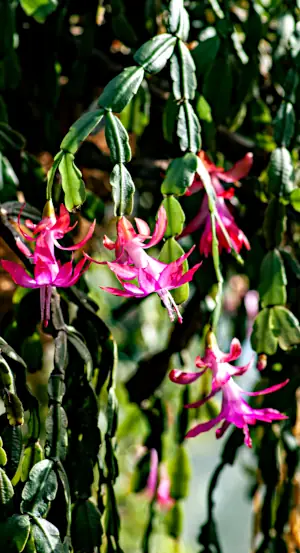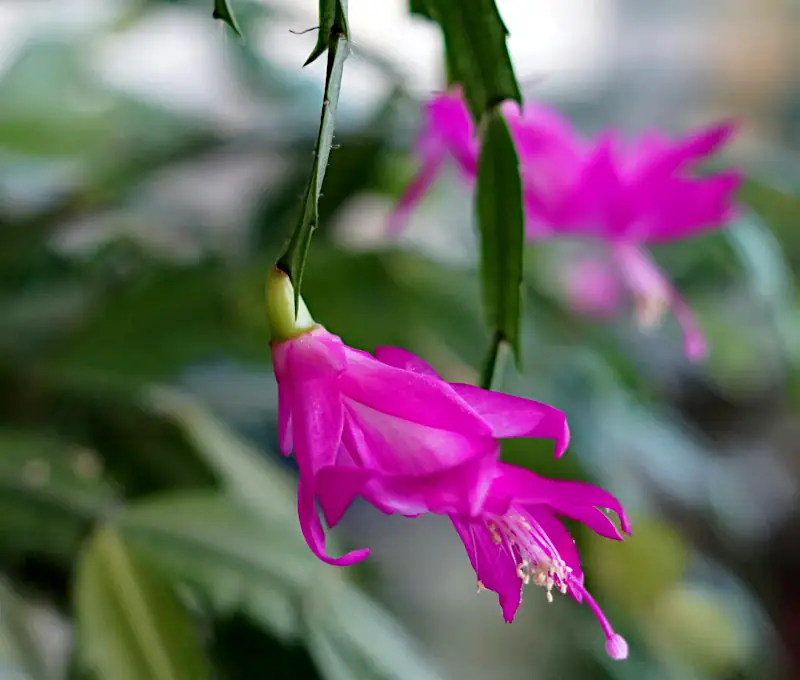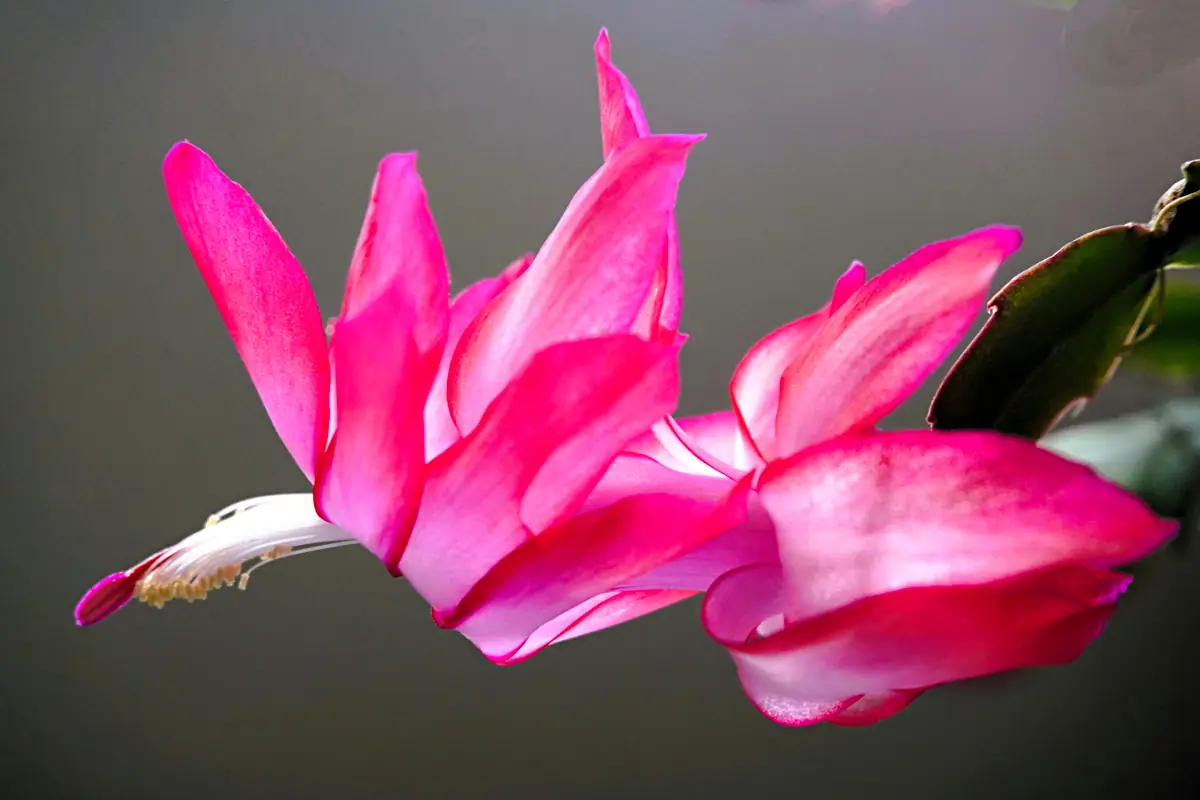Mastering Christmas cactus care is key to keeping this festive favorite healthy and blooming year after year. With its vibrant flowers and unique segmented stems, this tropical cactus brings color to the holidays and charm to your indoor garden. In this guide, you’ll learn how to grow, water, and maintain your Christmas cactus for the best results.
Table of Contents
- How to Care for a Christmas Cactus
- Plant Profile
- Christmas Cactus Care Tips
- Did You Know?
- Common Problems and Solutions
- FAQs about Christmas Cactus Care
- Final Thoughts on Christmas Cactus Care
How to Care for a Christmas Cactus
Despite its name, the Christmas cactus (Schlumbergera spp.) isn’t your typical desert cactus. Native to the cloud forests of Brazil, it thrives in humidity and filtered light. Understanding how to take care of a Christmas cactus involves getting the water, light, soil, and temperature just right—especially if you want to enjoy its brilliant holiday blooms.
Plant Profile
| Feature | Details |
|---|---|
| Scientific Name | Schlumbergera spp. |
| Common Name(s) | Christmas cactus, holiday cactus, crab cactus, zygo cactus |
| Plant Type | Tropical epiphyte |
| Best Climate / USDA Zones | 10–12 indoors (can be grown in lower zones as a houseplant) (What are USDA zones?) |
| Preferred Light Conditions | Bright, indirect light |
| Watering Needs | Moderate; allow top inch of soil to dry |
| Soil Type | Light, well-draining potting mix |
| Pet Safe or Toxic | Non-toxic to cats and dogs |
| Common Issues | Root rot, bud drop, wilting, overwatering |

Christmas Cactus Care Tips
- Lighting: Keep your Christmas cactus in a spot with bright, indirect sunlight. Avoid harsh direct sun, which can burn its leaves.
- Watering: Knowing how often to water a Christmas cactus is essential—generally every 1–2 weeks. Always let the top inch of soil dry out before watering again.
- Humidity: These plants love humidity. Mist them regularly or place a humidity tray nearby.
- Soil: Use the best soil for Christmas cactus—ideally, a mix of potting soil, perlite, and orchid bark for good drainage.
- Fertilizing: Apply a balanced Christmas cactus fertilizer monthly from spring to early fall. Stop feeding in late fall to encourage blooming.
- Repotting: Repot every 2–3 years using fresh potting soil for Christmas cactus to maintain healthy roots.
- Pruning: After blooming, you can prune the stems to encourage bushier growth.
- Blooming: To trigger a Christmas cactus bloom, reduce light and temperature in late fall—12–14 hours of darkness and around 55–60°F nightly.
Did You Know?
- It’s not a desert cactus. Despite its name, the Christmas cactus comes from tropical rainforests, not arid deserts.
- Long-lasting blooms. With proper Christmas cactus maintenance, its colorful flowers can last for several weeks.
- Holiday imposters. Many people confuse the Thanksgiving cactus with the Christmas cactus. Look at the leaf edges—Thanksgiving cactus has sharp, clawed segments, while the Christmas variety has rounded ones.

Common Problems and Solutions
- Bud Drop: Caused by sudden changes in temperature or overwatering. Keep conditions stable during the blooming season.
- Root Rot: Often due to soggy soil. Use a well-draining potting mix for Christmas cactus and don’t let the pot sit in water.
- Wilting or Limp Leaves: Typically due to under-watering or poor drainage. Check soil moisture and repot if needed.
FAQs about Christmas Cactus Care
How do you take care of a Christmas cactus indoors?
Place it in bright, indirect light, keep the soil slightly moist (but not soggy), and maintain moderate humidity. Avoid drafty areas and sudden changes in environment.
How often do you water a Christmas cactus?
Water every 1–2 weeks, allowing the top inch of soil to dry out between waterings. Adjust frequency based on humidity and temperature.
How to make a Christmas cactus bloom?
To encourage blooming, reduce light and temperature for 4–6 weeks in late fall. Aim for 12–14 hours of darkness and 55–60°F at night.
Final Thoughts on Christmas Cactus Care
With the right care, your Christmas cactus will become a cherished part of your holiday traditions. Its brilliant blooms and easygoing nature make it a favorite among indoor gardeners. Follow the tips in this guide to keep your plant healthy and blooming beautifully for many seasons to come.
If you love easygoing houseplants that complement your holiday cactus, you might enjoy learning about the snake plant (Sansevieria). It’s a hardy, low-maintenance companion that thrives in a variety of indoor settings. Check out our Snake Plant Care Guide to discover how this architectural beauty can add year-round interest to your indoor garden.

